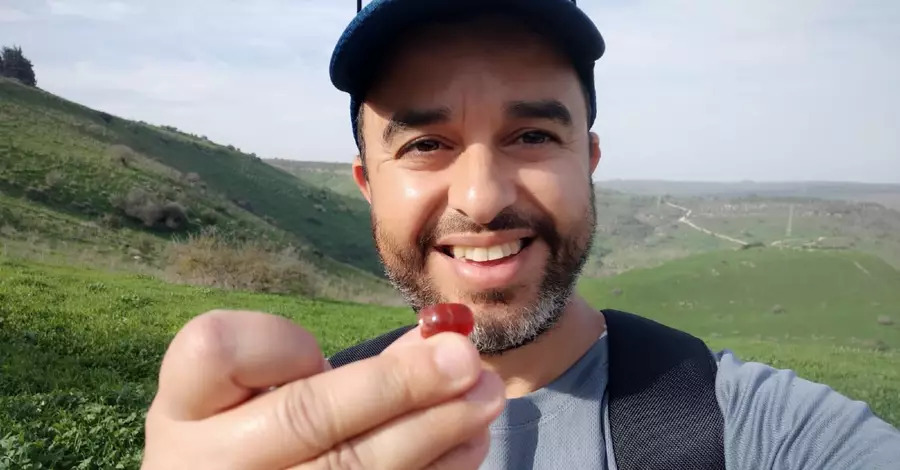
BY : Michael Foust ChristianHeadlines.com Contributor
“I had two days off from IDF reserves service, and I decided to take advantage of the sunny days to hike,” Avrahamov said, according to an Israel Antiquities Authority news release. “While walking, I saw something shiny on the ground, and at first, I thought it was a bead or an orange stone. When I picked it up, I noticed that it was engraved like a scarab or beetle.” Avrahamov contacted the Israel Antiquities Authority, which — upon inspection — told him it was a 2,800-year-old Assyrian seal, or scarab, dating to the time of Solomon’s temple. The seal likely was used around the time the Assyrians conquered the northern kingdom of Israel — events that are described in 2 Kings. The seal has the appearance of an orange insect and depicts a winged creature on the bottom. Nir Distelfeld of the Israel Antiquities Authority was the first to receive a call from Avrahamov. “I told him to take a good look at the other side of the scarab — the flat side — and check if it was also engraved,” Distelfeld said. “I immediately heard exclamations of excitement on the phone, and he told me that he could see a figure or image.” Othmar Keel, an emeritus professor at the University of Fribourg, Switzerland, said the object is made of a “semi-precious stone called carnelian” and depicts “either a mythical griffin creature or a galloping winged horse.”
It was found “at the foot of Tel Rekhesh, one of the most important tells in Galilee,” Distelfeld said. “The site has been identified as ‘Anaharat,’ a town within the territory of the tribe of Issachar (Joshua 19:19),” Distelfeld added. Scarab seals were shaped like dung beetles, the Israel Antiquities Authority said. Itzik Paz, an archaeologist for the Israel Antiquities Authority who excavated at Tel Rekhesh, described it as “one of the most important finds” ever found at the site. “At that time, a large fortress stood on the tell which was apparently under Assyrian control, the empire that was responsible for the destruction of the Northern Kingdom of Israel,” Paz said. “It is therefore quite possible that the scarab, discovered at the foot of the tell, testifies to the presence of Assyrian (or possibly Babylonian) administration at the site.” Images credit: ©Israel Antiquities Authority
















